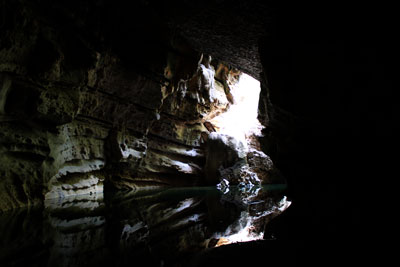Biak na Bato National Park, Bulacan
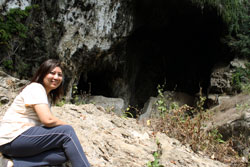 About two hours from Manila is a national park, rich with historical and ecological significance, located in several villages of San Miguel and Doña Remedios Trinidad towns in the northern part of Bulacan. The 2,100-hectare Biak na Bato national park has various ecological attractions, connected by hanging bridges and concrete trail that lead to a river, caves, falls, large boulders, ancient trees, and other exploration sites surrounded by a green forest. Biak na Bato is also a good site for bird watching. There are about 30 species of birds endemic to the area.
About two hours from Manila is a national park, rich with historical and ecological significance, located in several villages of San Miguel and Doña Remedios Trinidad towns in the northern part of Bulacan. The 2,100-hectare Biak na Bato national park has various ecological attractions, connected by hanging bridges and concrete trail that lead to a river, caves, falls, large boulders, ancient trees, and other exploration sites surrounded by a green forest. Biak na Bato is also a good site for bird watching. There are about 30 species of birds endemic to the area.
While the park is a part of the Sierra Madre montain range and stretches for more than seven kilometers, guests would already have ample adventure in visiting major sites located within the first kilometer that has concrete stairways leading up and downhill.
These sites include the Aguinaldo Cave, Cuarto Cuarto Cave, and the Bahay Paniki Cave. These caves onced served as headquarters of the Biak na Bato Republic of 1897, headed by the country's first president Emilio Aguinaldo, on their way to establishing the Malolos Constitution also in Bulacan.
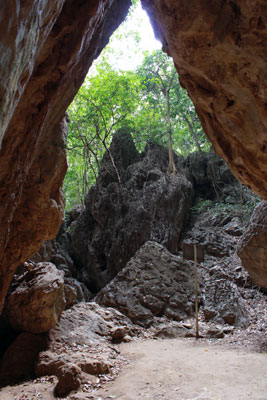
Going to Biak na Bato from Manila takes about two hours by private vehicle. It can be reached via the North Luzon Expressway, exiting to Sta. Rita gate in Guiginto, right after the Tabang gate.
Vehicles need to turn right to the national road all the way to the towns of Baliuag, San Rafael and San Ildefonso. It is the same route taken by buses on the way to Cabanatuan, Nueva Ecija or to Tuguegarao, Cagayan, except that in San Miguel, there is a Y intersection, with the right side going to Biak na Bato.
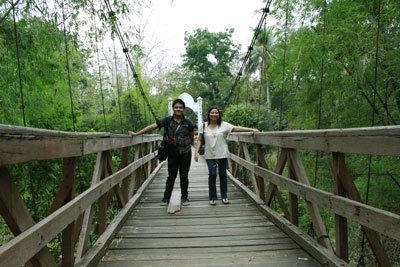
A green signboard directs the way to Biak na Bato. A secondary road leads to another Y intersection where vehicles need to turn right again, as pointed by the signboard. This leads to a village with a sparse population. Once vehicles reach another Y road, the left side leads to the village of Sibul, known for its hotsprings, while the right side leads to Biak na Bato. Follow the road until you reach the entrance gate of the national park, with a marker. A space is provided for parking near the entrance, for a fee of PhP20. The Department of Environment and Natural Resources (DENR), which takes charge of the park, also charges a PhP30 entrance fee for adults and PhP20 for students.
First-time visitors are advised to hire a tourist guide, to help them navitage the trail within the first kilometer. They charge PhP150 for this, and PhP150 for exploration of each cave. Guests are not allowed to go to the deeper parts of the river or inside the cave without being accompanied by the trained tourist guides.
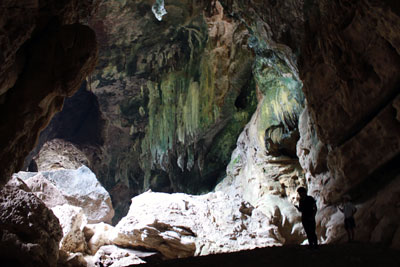
Biak-na-Bato is a beautiful natural park, but becomes too crowded during summer. It is a preferred location for shooting local movies and telenovelas. However, it is most famous for being the site of the first Philippine Republic.
Aguinaldo Cave, which has an underground river with refreshingly cool water, is where Emilio Aguinaldo reportedly hid from the Spanish regime. "Cuarto Cuarto" cave, which is actually a branch of the vast network of Aguinaldo Cave, can be explored with the help of a guide.
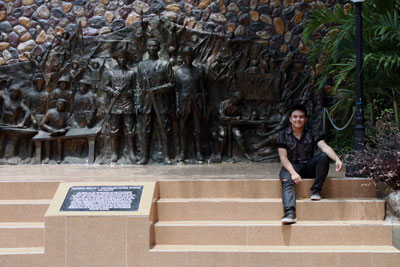
From the Aguinaldo Cave, guests can follow the long stretch of the river, which is partitioned by large rocks and boulders scattered around the area. One is given the choice to frolic in the shallow sections of the river or swim in its deeper parts.
A hundred years ago, Katipuneros fighting for freedom chose this area at the foot of Sierra Madre as their headquarters. They drank from its springs and took shelter in its caves. Most caves in the area (there are more than a hundred) remain unexplored and continue to evolve naturally.
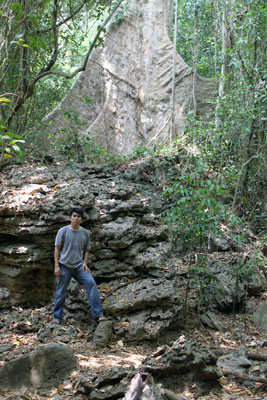
After an arduous walk uphill and downhill, guests would be treated at the sight of "Bahay Paniki Cave", whose mouth could swallow the largest church there is. A group of bats were circling endlessly on the upper part of the cave. At the rear part of the cave is another opening where sunlight passes through.
The water of the Biak na Bato river comes from numerous springs around the area and from the grand Sierra Madre group of mountains. The geological base of Biak-na-Bato forms part of the Angat watershed that supplies the water requirements of Metro Manila. Biak-na-Bato's natural springs serve the needs of local communities surrounding the park.
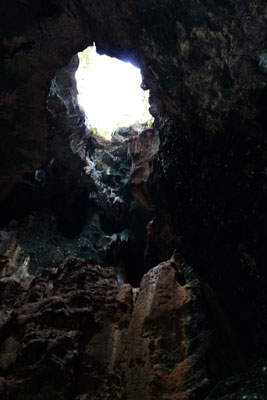
Guests are advised to bring their own food and water into the park, as there are no stores once you pass the gate. Visitors can picnic at the huts located along the concrete trail leading to various sites. Just make sure that you bring your trash home with you, so as not to pollute the river and the forest.
Comfort rooms are located near the entrance gate just after crossing the first hanging bridge. Guests can also take a bath at these comfort rooms, but have to make sure they leave a tip to the staff who maintain the facilities.
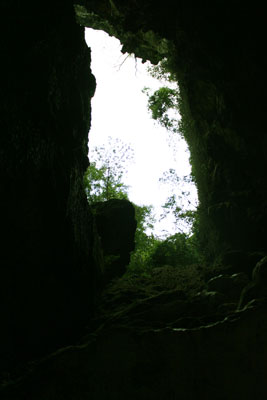
Exploring Biak na Bato can be a pleasant experience for those who have the interest to know the history of their country and the energy to walk a great distance uphill or downhill and navigate the caves to see wonderful stalactites and stalagmites. Simply put, Biak na Bato is a great forest, with a view of great history.
